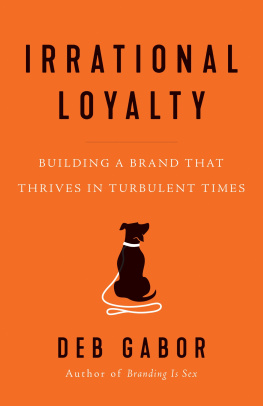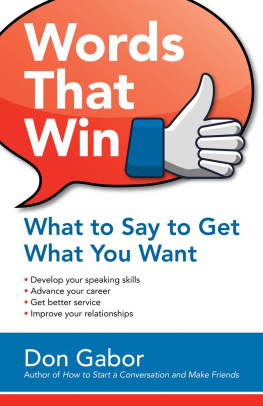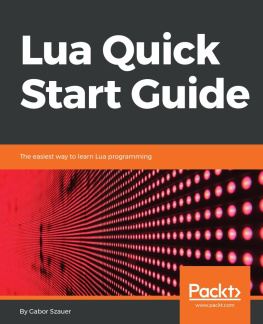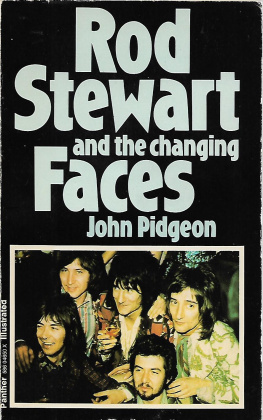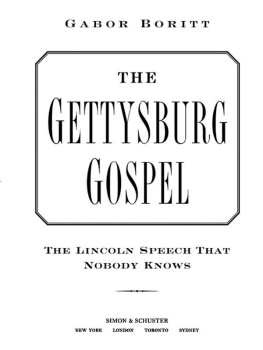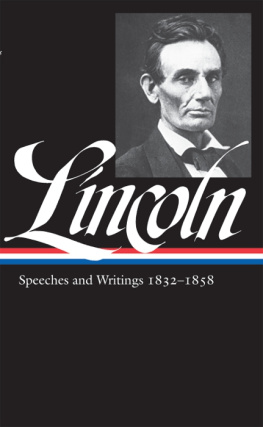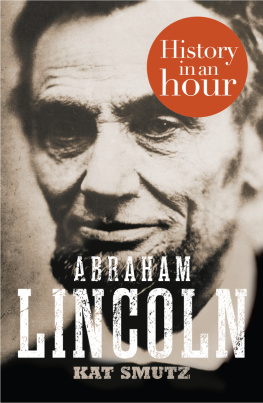THE LINCOLN ENIGMA
Gettysburg Civil War Institute Books
Published by Oxford University Press
Edited by Gabor S. Boritt
Why the Confederacy Lost
Lincoln, the War President: The Gettysburg Lectures
Lincolns Generals
War Comes Again: Comparative Vistas
on the Civil War and World War II
Why the Civil War Came
The Gettysburg Nobody Knows
Jefferson Daviss Generals
The Lincoln Enigma
Other books by Gabor S. Boritt
Lincoln and the Economics of the American Dream
The Lincoln Image: Abraham Lincoln and the Popular Print
(with Harold Holzer and Mark E. Neely, Jr.)
The Confederate Image
(with Mark E. Neely, Jr. and Harold Holzer)
The Historians Lincoln: Pseudohistory, Psychohistory, and History
(with Norman O. Forness)
The Historians Lincoln, Rebuttals:
What the University Press Would Not Print
Of the People, By the People, For the People
and Other Quotations from Abraham Lincoln
(with Jakob B. Boritt, Deborah R. Huso, and Peter C. Vermilyea)
THE LINCOLN ENIGMA
The Changing Faces of an American Icon
E DITED B Y
Gabor Boritt
E SSAYS B Y
Gabor Boritt
Douglas L. Wilson Jean H. Baker
Gerald J. Prokopowicz
David Herbert Donald
Allen C. Guelzo
William C. Harris
Robert V. Bruce
Harold Holzer and Gabor Boritt


Oxford New York
Athens Auckland Bangkok Bogot Buenos Aires Calcutta
Cape Town Chennai Dar es Salaam Delhi Florence Hong Kong Istanbul
Karachi Kuala Lumpur Madrid Melbourne Mexico City Mumbai
Nairobi Paris So Paulo Shanghi Taipei Tokyo Toronto Warsaw
and associated companies in
Berlin Ibadan
Copyright 2001 by Gabor Boritt
Published by Oxford University Press, Inc.
198 Madison Avenue, New York, New York 10016
Oxford is a registered trademark of Oxford University Press
All rights reserved. No part of this publication may be reproduced,
stored in a retrieval system, or transmitted, in any form or by any means,
electronic, mechanical, photocopying, recording, or otherwise, without the prior permission of Oxford University Press.
Library of Congress Cataloging-in-Publication Data
The Lincoln enigma / edited by Gabor Boritt
p. cm.
Includes bibliographical references and index.
ISBN 0-19-514458-9
1. Lincoln, Abraham, 18091865. 2. Lincoln, Abraham, 18091865Influence.
3. PresidentsUnited StatesBiography. I. Boritt, G. S., 1940
E457.8 L.737 2001
973.7092dc21
[B] 00-051647
1 3 5 7 9 8 6 4 2
Printed in the United States of America on acid-free paper


MARRIED WITH CHILDREN Mixed media by Beowulf Boritt
Who was he? This enigma? People ask persistent questions and answers take both boldness and great care. Were Mary and Abraham happily married? Or did they live in barely bearable discord? Was he straight or gay? Racist or emancipator? On the verge of madness? Military genius or daydreamer about field command? Defender of the Constitution or almost a dictator? Maker of peace or demanding unconditional surrender? What did he believe? Was there life after death? Modern historians speak in this book and in the end so do modern artists: Picasso and company.
Contents
1. Did He Dream of a Lily-White America?
The Voyage to Linconia
By late June it is usually warm,
even hot in Gettysburg.
In the night at our farm,
the fireflies glow in the dark,
fleeting specks illuminating the woods and
turning Marsh Creek into a pageant.
In the daytime along the side of the road,
orange tiger lilies proclaim their eternal message.
My heart overflows;
it is time to see old friends again,
time to make new ones.
it is the time for the Gettysburg Civil War Institute.
Gabor Boritt
Introduction
As the new millennium dawned at the Green Parrot in Key West, the Rocking Jakes played loud and the crowd roared and swayed. A watering place for locals, its New Years patrons were happy. Key West is the southernmost town in the United States. Next to the pinball machine, Revenge from Mars, above the jukebox, close to the pictures of the Beatles and Mohammed Ali, hung a large portrait of Abraham Lincoln. Nobody looked at him, no more than at other parts of the decor. Lincoln was safe and forgottenan American security blanket.
At the Ebenezer Baptist Church in Atlanta, where the Rev. Dr. Martin Luther King, Jr., had preached, the mood, as always, was prayerfully solemn. So it was in many black churches across the country on this Emancipation Day or Jubilee Day. The celebrations represent the real Fourth of July or Independence Day for African Americans, explained an NAACP leader. The first one, July 4, 1776, did not apply to us.
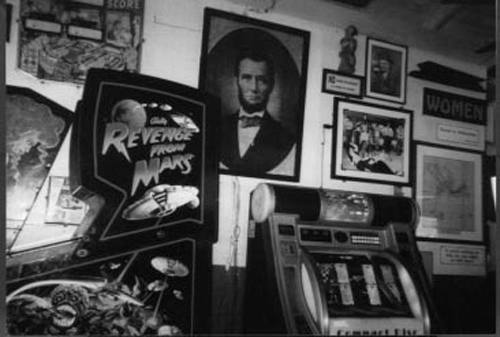
The millennium dawns at Key West. Photo: Jake Boritt
In Gettysburg the revelers congregated in the town square. The cold made breaths steam, but nothing could dampen the palpable happiness. Locals mixed with visitors, some from lands faraway. Pickpockets worked the crowd. Close to midnight a beautiful young woman wandered out of the hotel in the square, her white wedding dress cut low, bare arms raised, champagne in hand. She danced. Then the spectacular fireworks started heralding the new millennium.
In one corner of the square named after him stood Abe Lincoln, barely on the curb, an arm on the back of a tourist. Nearly six foot four, an exact life-size bronze, his face based on a life mask (a plaster cast taken by sculptor Clark Mills in 1865), his hands based on a plaster cast also made from life in 1860, his black suit a perfect copy of the one he wore to Fords Theatre, his hat, too, authentic, down to the label inside it, his boots sized to the outline of his feet drawn by a Pennsylvania shoemaker in 1864. Seward Johnsons sculpture stood there as the twentieth century ended with fireworks and noise, readily ignored by all, for he was so much part of the place.
At the local colleges beautiful modern library, in the spacious dark of the apse, slept an exhibit of Sam Finks 15 watercolors, each containing Lincoln and a dazzling calligraphy of the 272 words of the Address. Dark of the night now. But the students would return, the lights would come on; and the exhibit, The Gettysburg Address is Alive and Well, would stay up through the year 2000. As the new millennium dawned, Lincoln was alive and well.
A few weeks earlier, Ohio State Universitys womens rugby team, visiting the nations capital for a game, wished to be noticed; so a dozen members went to the Lincoln Memorial and posed topless. A Washington Post photographer caught the action. In the brouhaha that followed someone observed that the Memorial should be remembered for Martin Luther King, Jr., not for the breasts of the Ohio State womens rugby team. But the women athletes, with a $600 yearly budget, wanted more equality, and turned to Lincoln.
Next page

